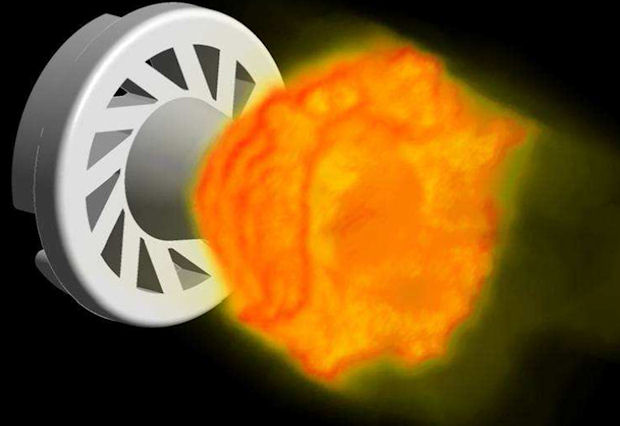Solving Complex Combustion Challenges – From Air-Fuel Mixing to Pollutant Emissions
Latest News
April 23, 2014
 Dear Desktop Engineering Reader:
Dear Desktop Engineering Reader:
It’s likely that today is Shakespeare’s 450th birthday. In honor of that, please note that many of you and the Weird Sisters in Macbeth — you know: “Double, double, toil and trouble/fire burn, and cauldron bubble!” — have something in common beyond a taste for eye of newt. You both use technology to predict future events. They used a charmed pot to boil entrails to produce their analyses, and you use something like ANSYS CFD (computational fluid dynamics) on a workstation or a high-performance computer setup to develop your predictions. But, still, you’re both trying to understand the effect of mixed elements in heated environments.
Strained analogies aside, processes such as coal combustion for power generation, combustion in furnaces for home heating and combustion in waste incineration pose a variety of engineering challenges. Combustion has to be stable. You have to control temperature distribution, and all the while you need to make sure the process is as efficient as possible and compliant with ever more rigorous pollution regulations. A tough assignment about which the (King) Leary might say “that way madness lies,” but the informed know better.
Today’s Check it Out link takes you to an ANSYS Technology Tip web page called “Solving Complex Combustion Challenges — From Air-Fuel Mixing to Pollutant Emissions.” ANSYS offers a range of fluid dynamics simulation tools for applications that require efficient combustion, and this technology tip explores your options.
Among your ANSYS CFD options are turbulence models to predict fuel–air mixing and combustion models that simulate everything from flame location and temperature distribution to pollutant emissions. There are heat transfer models you can use to predict the influence of radiation, combustion systems’ wall temperature and the like. ANSYS offers capabilities that handle liquid and gas fuels as well as combustible particles like coal. Its FSI (fluid–structure interaction) capabilities can help you predict the effects of hot gases on combustion system casings.
The “Solving Complex Combustion Challenges” technology tip covers pretty much all of this. To begin your discovery, go to the bottom of the Resource Center on the right-hand side of the page and download the article called “The Greening of Gas Burner Design” (registration free). It looks at how simulation has been used to develop efficient, eco-friendly recuperative gas burners. Then check out the “Cutting Design Costs” white paper (registration required). The focus here is on the return on your investment in CFD software.
Smack in the middle of this web page and highlighting the coverage is an 8-minute video of the same title as the technology tip itself. Make sure to go into full-screen mode so that you can see the details in this registration-free video easily.
This step-by-step narrated demonstration focuses on two analyses, both simulating events in an experimental DLR combustor at the German Aerospace Center. The first is a large eddy simulation of natural gas combustion and carbon monoxide pollutant emission prediction. The second is a simulation of a lifted methane air jet flame in vitiated coflow. That means they offer a lot of simulations of methane and air mixing, swirling gases, flame distribution and flame location data.
Both analyses show how ANSYS Fluent enables you to leverage a “pragmatic” simulation approach that hones in on just a few scalar areas of interest to obtain the results you need to make an accurate prediction of combustion and flame dynamics in a combustor. For those of you reading the HTML version of this message, the screen capture up there is from the large eddy simulation. The video has a few complementary views of this effect that you can’t miss.
The singular feat of this page, however, is a five-part webinar series on modeling reacting flows with ANSYS CFD software. These will be like extensive training, so working your way through them will take time. As far as I know, you will not earn a continuing education certificate. But all things are ready, if our mind be so.
So quick bright things come to confusion, or so it seems. “Solving Complex Combustion Challenges – From Air-Fuel Mixing to Pollutant Emissions” demonstrates that ANSYS CFD software can upon the heat and flame of thy distemper sprinkle cool patience and provide accurate results. Hit today’s Check it Out link and begin to explore what this brave new world could hold for you.
Thanks, Pal. – Lockwood
Anthony J. Lockwood
Editor at Large, Desktop Engineering
Go to: Solving Complex Combustion Challenges – From Air-Fuel Mixing to Pollutant Emissions
Subscribe to our FREE magazine, FREE email newsletters or both!
Latest News
About the Author
Anthony J. Lockwood is Digital Engineering’s founding editor. He is now retired. Contact him via [email protected].
Follow DE






